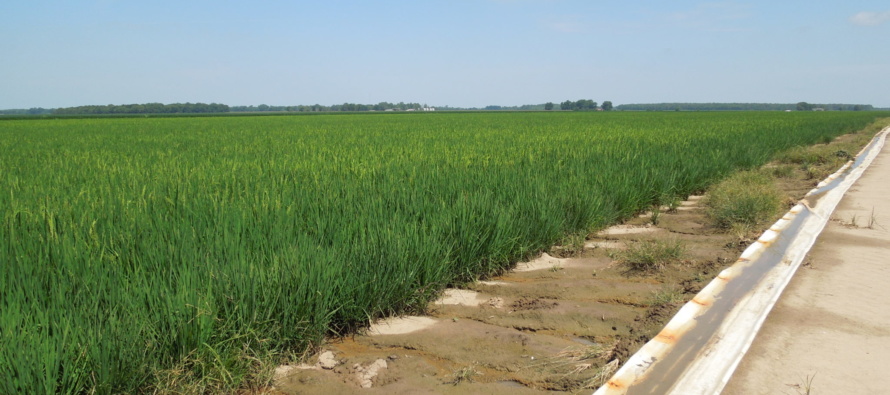The Versatility of Furrow Irrigated Rice

Related Articles
- Rice Variety Trial Results For 2010, Plus Rice Research Report 0
- Rice Seeding Rate Calculator and Chart 0
- 2011 Rice Burndown Considerations 0
Latest Tweets
Bill O’Neal of Allendale Planting Company in Shelby is well versed in adaptation to get the job done. Allendale is one of the farms on the riverside that for “Delta standards” most would call rolling or hilly. Two years ago, O’Neal was given the opportunity to purchase an adjacent property that was rolling and being irrigated by center pivot. With furrow irrigation for row crops of corn, soybeans and cotton in mind, O’Neal worked with his surveyor to precision landform the property. After landforming, grades on the fields ranged from .15 to has high as 1.2 tenths. Knowing full well of the benefits of rice to build the soil after landforming, O’Neal made the decision to plant rice on as much of the property as possible. Determined to plant rice to build the soil, planting furrow irrigated rice on many of the high grade fields was the only alternative. Here are his results.
Most of the fields had steep grade where O’Neal utilized furrow irrigated rice. Most were long narrow fields next to natural drains and canals. Fields were planted long ways utilizing a John Deere air seeder. The “rows” were pulled with an Orthman buster either immediately after planting or if rain delayed, prior to 4 leaf rice stage.
Above of some of the grades and yield maps from some of the furrow irrigated fields.
\
Presented are the yield results and water use from the furrow irrigated fields. Water use was 41.4 acre inches for the furrow irrigated fields verses 28.87 acre inches for the conventional levee .30 graded field. Not bad considering the one foot grade of the furrow irrigated field. Yields of the five furrow irrigated fields averaged 217.69 bushels verses the 211.56 bushels of the conventional levee .30 grade comparison field. These results show just how versatile furrow irrigated rice can be. As O’Neal’s consultant replied, “if you can raise row rice on grades like this, you can raise it anywhere”.







Let me tell You a sad story ! There are no comments yet, but You can be first one to comment this article.
Write a comment